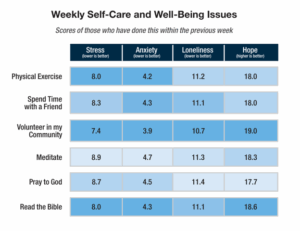
BOULDER, Colo. (BP) – When a woman comes to Warren Hern for an abortion, the doctor performs a procedure that takes three or four days. Following an ultrasound, he continues by “inducing fetal demise,” he told The Atlantic magazine.
Hern performs the rarest of abortion procedures in the U.S., ending pregnancies that have surpassed 20 weeks’ gestation and offering the procedure throughout the third trimester of pregnancy. He only takes cases when he considers it safer for the mother to abort than to carry the child to term, he told The Atlantic. His case load has increased by about 50 percent, he said, since the reversal of Roe v. Wade, with some women seeking his services when they’re past the time window for legal abortions in their states of residence.
Such late-term abortions are legal in six states and the District of Columbia, according to tracking sites including Guttmacher.org, with 44 states limiting abortions either at conception or at some point before birth. Virginia limits abortions in the third trimester, but such late-term abortions are legal without exception in Alaska, Colorado, New Jersey, New Mexico, Oregon and Vermont.
The Boulder Abortion Clinic where Hern works is one of four clinics in the U.S. that publicly advertise abortions past 24 weeks of gestation – counting from the mother’s last menstrual period – according to a study reported in the June 2022 edition of the National Library of Medicine of the National Institutes of Health.
Many of the women to receive late-term abortions at the Boulder Abortion Clinic say they are there because their lives are at risk, and many only learn of the risks late in their pregnancies. But in at least two cases among the many abortions the 84-year-old Hern has performed in his more than 40 years of practice, two were performed because the mother wanted a child of the opposite gender, Hern told The Atlantic.
Hern defended the procedures based on gender, as well as the many others he has performed when the mother’s life was at risk, the fetus was not deemed compatible with life because of an abnormality or illness, or the fetus suffered severe abnormalities.
“Every pregnancy is a health issue,” The Atlantic quoted Hern. “There’s a certifiable risk of death from being pregnant, period.”
According to Dr. Donna Harrison, CEO of the American Association of Pro-Life Obstetricians and Gynecologists, quoted by the pro-life Charlotte Lozier Institute, it’s almost never medically necessary to perform any late-term abortion.
“Most late term abortions are done for the same social reasons that earlier abortions are done,” Harrison said. “Late-term abortions are much more dangerous for the mother than giving birth. Late-term abortions involve much higher risk of death from the abortion procedure itself, as well as higher risk of perforating the womb, massive bleeding, and damage to the womb.”
Hern described his procedure to The Atlantic. After an ultrasound, he injects digoxin through a thin needle into the patient’s abdomen to kill the fetus. Then, he inserts sterile, brownish rods of seaweed into the woman’s cervix to induce dilation. He continues the use of additional seaweed rods, known as laminaria, into the woman’s cervix until she is sufficiently dilated. He drains the amniotic fluid, administers misoprostol and removes the fetus, The Atlantic reported. Sometimes, Hern said, the fetus will be intact; other times, it is removed in parts.
Nationally, third-trimester abortions are the least supported among those who favor the procedure. The NLM references a 2018 Gallup poll in which 13 percent of respondents said abortion should generally be legal in the third trimester, with 75 percent making an exception to save the mother’s life, 52 percent making an exception for rape, and up to 48 percent making an exception for a serious fetal health issue.
Late-term abortions range in price from several thousand dollars to $25,000, according to the NLM.
The Southern Baptist Convention has long advocated for the life of the unborn, including the 2021 resolution “On Abolishing Abortion.” The resolution approved by messengers to the 2021 meeting makes no exceptions to the promoted prohibition.
The 2022 resolution “On Anticipation of a Historic Moment in the Pro-life Movement” affirmed the SBC’s prolife stance and heralded the anticipated overturning of Roe v. Wade.
The U.S. Supreme Court overturned the landmark ruling nine days after messengers passed the 2022 resolution, returning the question of abortion rights to the state level. Since then, states have robustly enacted limitations on the procedure. Most recently, the North Carolina legislature overrode Gov. Roy Cooper’s veto of a bill banning most abortions in the state after 12 weeks of pregnancy.
Less than 1 percent, 0.9 percent, of abortions in the U.S. were performed past 21 weeks’ gestation in 2020, according to the U.S. Centers for Disease Control and Prevention (CDC). But data from the Lozier Institute suggests the number could be higher, as the CDC estimate does not include data from at least two states that allow late-term abortions for general health reasons and/or fetal anomalies — California and Maryland. For example, in 2019, late-term abortions (post-21 weeks) accounted for nearly 12 percent of all abortions in New Mexico, according to CDC data.
Abortions in the U.S. decreased 15 percent from 2011 to 2020, the CDC reported.
–30–
























